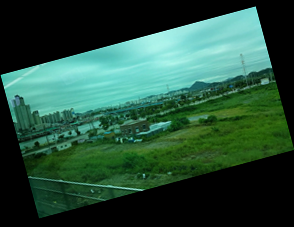VideoView
PUBLISHED
The Dali::Toolkit::VideoView is a control for video playback and display. It provides minimum functions for playback (play, pause, stop, forward, and backward). Some options, such as volume, can be controlled through the control properties. For the VideoView to work, a video plugin is needed. The Tizen 3.0 platform includes the required Dali video plugin.
Figure: VideoView

In this tutorial, the following subjects are covered:
VideoView events
The following table lists the basic signal provided by the Dali::Toolkit::VideoView class.
Table: Dali::Toolkit::VideoView input signals
| Input signal | Description |
|---|---|
FinishedSignal() |
Emitted when a video playback is finished. |
The VideoView class provides the FinishedSignal(), which is emitted when the video playback is finished. The related callback can support some basic actions.
void Create( Application& application )
{
mView.FinishedSignal().Connect( this, &VideoViewController::OnFinished );
}
void OnFinished( VideoView& view )
{
mFinished = true;
}
Creating a VideoView
The following basic example shows how to create a Dali::Toolkit::VideoView object:
class VideoViewController: public ConnectionTracker
{
public:
VideoViewController( Application& application )
: mApplication( application )
{
mApplication.InitSignal().Connect( this, &VideoViewController::Create );
}
void Create( Application& application )
{
// Set the handle
mView = Toolkit::VideoView::New( "videofile.mp4" );
Stage::GetCurrent().Add( mView );
mView.SetParentOrigin( ParentOrigin::CENTER );
mView.SetAnchorPoint( AnchorPoint::CENTER );
mView.SetResizePolicy( ResizePolicy::USE_NATURAL_SIZE, Dimension::ALL_DIMENSIONS );
mView.SetSize( WIDTH, HEIGHT );
mView.Play();
}
private:
Application& mApplication;
VideoView mView;
}
VideoView::New() function, or by modifying VIDEO property with SetProperty( VideoView::Property::VIDEO, "videofile2.mp4" ).VideoView Properties
You can modify the VideoView appearance and behavior through its properties.
The following table lists the available VideoView properties.
Table: VideoView properties
| Property | Type | Description |
|---|---|---|
VIDEO |
STRING or MAP | Video file URL string. This property can also provide additional features, such as a custom shader, by Property::Map. |
LOOPING |
BOOLEAN | Whether the playback loops |
MUTED |
BOOLEAN | Whether the playback is muted |
VOLUME |
MAP | Playback volume. The Property::Map must get left and right volume scalar as a float type. |
UNDERLAY |
BOOLEAN | Video rendering by underlay |
PLAY_POSITION |
INTEGER | The play position (millisecond) of the video |
DISPLAY_MODE |
DisplayMode | Options for video mode on the VideoView |
To change a property from its default value, use the SetProperty() function:
Property::Map oldMap; Property::Value value = mView.GetProperty( VideoView::Property::VOLUME ); Value.Get( oldMap ); Property::Map newMap; newMap.Insert( "volumeLeft", 1.0f ); newMap.Insert( "volumeRight", 0.5f ); mView.SetProperty( VideoView::Property::VOLUME, newMap );
To change the display mode, use the PLAYER_DISPLAY_MODE enums (in mobile and wearable applications).
LETTER_BOXORIGIN_SIZEFULL_SCREENCROPPED_FULLORIGIN_OR_LETTERDST_ROI
mView.SetProperty( VideoView::Property::DISPLAY_MODE, VideoView::DisplayMode::LETTER_BOX );
Was this document helpful?
We value your feedback. Please let us know what you think.


